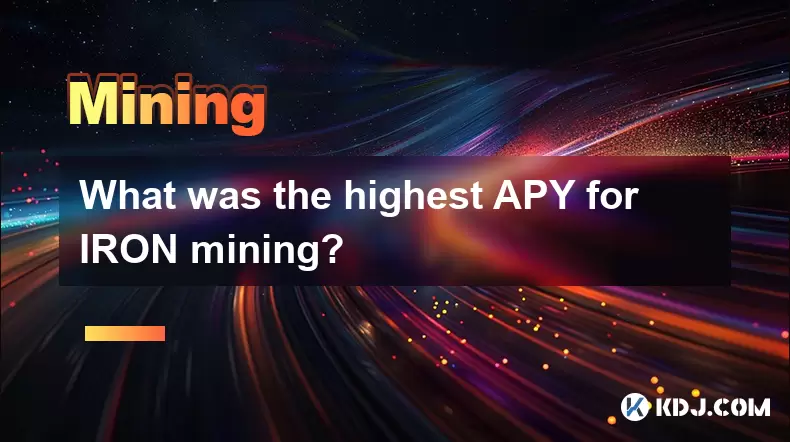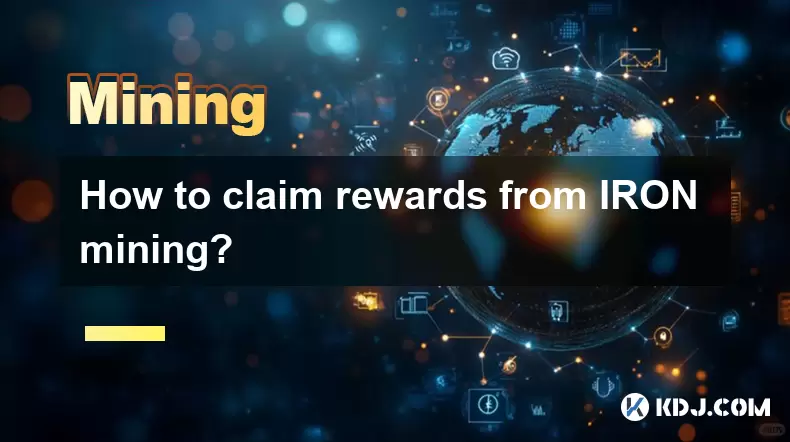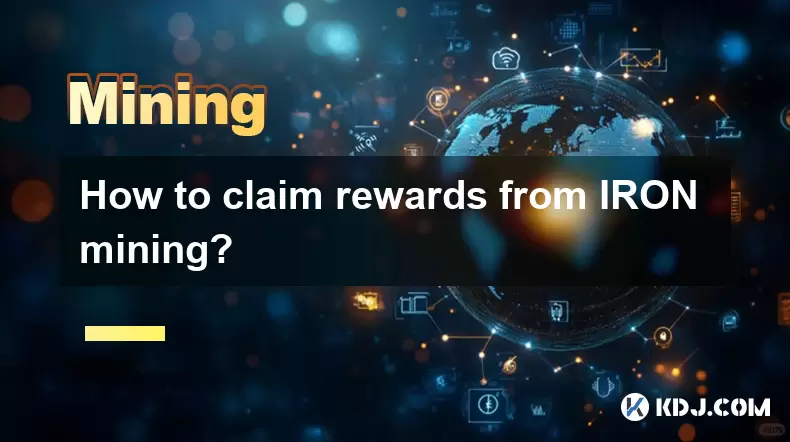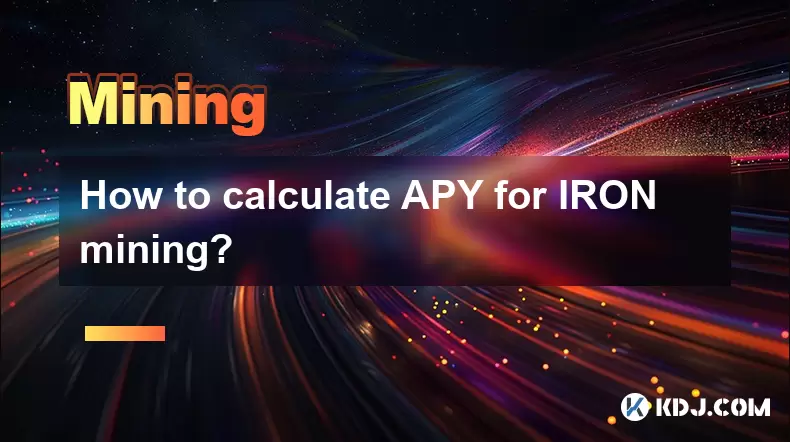-
 Bitcoin
Bitcoin $115200
-2.68% -
 Ethereum
Ethereum $3601
-5.16% -
 XRP
XRP $3.035
-2.96% -
 Tether USDt
Tether USDt $0.9997
-0.04% -
 BNB
BNB $764.5
-5.43% -
 Solana
Solana $168.1
-5.92% -
 USDC
USDC $0.9998
-0.02% -
 Dogecoin
Dogecoin $0.2090
-4.80% -
 TRON
TRON $0.3272
-0.49% -
 Cardano
Cardano $0.7306
-5.00% -
 Hyperliquid
Hyperliquid $39.16
-12.22% -
 Stellar
Stellar $0.3967
-4.96% -
 Sui
Sui $3.566
-5.95% -
 Chainlink
Chainlink $16.55
-6.57% -
 Bitcoin Cash
Bitcoin Cash $552.3
-3.90% -
 Hedera
Hedera $0.2516
-4.69% -
 Avalanche
Avalanche $21.99
-5.75% -
 Toncoin
Toncoin $3.621
-0.28% -
 Ethena USDe
Ethena USDe $1.000
-0.03% -
 UNUS SED LEO
UNUS SED LEO $8.951
0.02% -
 Litecoin
Litecoin $105.9
-3.59% -
 Shiba Inu
Shiba Inu $0.00001232
-5.00% -
 Polkadot
Polkadot $3.640
-5.55% -
 Uniswap
Uniswap $9.048
-7.03% -
 Monero
Monero $301.8
-1.51% -
 Dai
Dai $0.9999
-0.01% -
 Bitget Token
Bitget Token $4.334
-3.66% -
 Pepe
Pepe $0.00001064
-6.17% -
 Cronos
Cronos $0.1367
-5.78% -
 Aave
Aave $259.2
-4.59%
Is the electricity cost of LTC mining high? How to reduce energy consumption?
LTC mining consumes significant electricity; reduce costs by using efficient hardware, renewable energy, and joining mining pools.
May 02, 2025 at 04:42 am

Is the electricity cost of LTC mining high? How to reduce energy consumption?
Litecoin (LTC) mining, like other cryptocurrency mining processes, involves significant electricity consumption. This article delves into the specifics of the electricity costs associated with LTC mining and explores various strategies to reduce energy consumption effectively.
Understanding the Electricity Costs of LTC Mining
The electricity cost of LTC mining can be substantial due to the computational power required to solve the complex mathematical problems inherent in the mining process. Litecoin uses the Scrypt algorithm, which is less energy-intensive than Bitcoin's SHA-256 algorithm, but it still requires significant energy to operate mining hardware efficiently.
The cost of electricity varies widely depending on your location. In regions where electricity is cheap, such as in some parts of China or Iceland, the cost of mining can be relatively low. Conversely, in areas where electricity is expensive, such as parts of Europe or the United States, the cost can be prohibitively high. To calculate the electricity cost of LTC mining, you need to consider the power consumption of your mining rig and the local electricity rate.
For example, if a mining rig consumes 1,500 watts and the local electricity rate is $0.12 per kilowatt-hour (kWh), the cost to run the rig for one hour would be $0.18. Over a month, this would amount to approximately $130, assuming continuous operation. This calculation demonstrates how quickly electricity costs can accumulate.
Factors Affecting Electricity Costs in LTC Mining
Several factors influence the electricity costs of LTC mining. The efficiency of the mining hardware is crucial. Newer, more efficient ASIC miners designed specifically for Scrypt algorithms can significantly reduce the power consumption per hash compared to older models.
The scale of the mining operation also impacts electricity costs. Larger mining farms can often negotiate better electricity rates and invest in more efficient cooling systems, which can lower the overall cost per unit of Litecoin mined.
Environmental conditions play a role as well. In warmer climates, more energy may be required for cooling, increasing the total electricity consumption. Conversely, in colder climates, the heat generated by mining rigs can be used to offset heating costs, potentially reducing overall energy expenses.
Strategies to Reduce Energy Consumption in LTC Mining
To mitigate the high electricity costs associated with LTC mining, miners can employ several strategies to reduce energy consumption.
Choose Energy-Efficient Hardware: Investing in the latest ASIC miners designed for Scrypt algorithms can significantly reduce power consumption. Models like the Antminer L3+ or the Innosilicon A4+ LTCMaster are known for their efficiency.
Optimize Mining Software: Using optimized mining software can help reduce the energy footprint. Software like CGMiner or EasyMiner can be configured to maximize efficiency by adjusting settings such as the intensity of mining operations.
Implement Proper Cooling Solutions: Efficient cooling systems can prevent overheating, which in turn reduces the need for additional energy to cool down the mining rigs. Consider using fans, liquid cooling, or even immersion cooling techniques.
Utilize Renewable Energy Sources: Where possible, miners can switch to renewable energy sources such as solar or wind power. This not only reduces the electricity cost but also the environmental impact of mining.
Participate in Mining Pools: Joining a mining pool can help distribute the electricity costs among multiple participants, making the operation more cost-effective. Pools like Litecoinpool.org or ProHashing allow miners to share resources and reduce individual energy expenses.
Monitor and Adjust Operations: Regularly monitoring the performance and energy consumption of your mining setup can help identify inefficiencies. Adjusting the operation based on these insights can lead to significant energy savings.
Calculating and Monitoring Electricity Costs
To effectively manage electricity costs, miners must be able to calculate and monitor their consumption accurately. Using a power meter to measure the actual power draw of your mining rig is a crucial first step. Many miners use devices like the Kill A Watt meter to get precise readings.
Once you have the power consumption data, you can use online calculators or mining profitability calculators to estimate the cost of electricity based on your local rates. Websites like WhatToMine or Coinwarz provide tools to help miners calculate their potential profits and electricity costs.
Regular monitoring is essential to ensure that your mining operation remains cost-effective. Software solutions like Awesome Miner or MinerGate can provide real-time data on energy consumption and mining performance, allowing you to make informed adjustments to your setup.
Case Studies of Successful Energy Reduction in LTC Mining
Several case studies highlight successful strategies for reducing energy consumption in LTC mining. For instance, a mining farm in Iceland leverages the country's abundant and cheap geothermal energy to power its operations. By using renewable energy, the farm not only reduces its electricity costs but also its environmental impact.
Another example is a mining operation in Texas that uses solar panels to offset its energy consumption. During peak sunlight hours, the operation can run entirely on solar power, significantly reducing its reliance on the grid and lowering electricity costs.
In a small-scale mining setup in Canada, the miner implemented a liquid cooling system to reduce the energy required for cooling. This approach not only improved the efficiency of the mining rigs but also extended their lifespan, leading to long-term savings.
Practical Steps to Implement Energy-Saving Measures
Implementing energy-saving measures in LTC mining requires careful planning and execution. Here are some practical steps to follow:
Assess Your Current Setup: Start by evaluating your existing mining hardware and software. Identify areas where improvements can be made, such as upgrading to more efficient miners or optimizing software settings.
Research and Invest in Efficient Hardware: Look into the latest ASIC miners designed for Scrypt algorithms. Compare their power efficiency ratings and choose models that offer the best performance per watt.
Install and Configure Cooling Systems: Depending on your setup, you may need to install fans, liquid cooling systems, or immersion cooling solutions. Ensure that these systems are properly configured to maximize their effectiveness.
Explore Renewable Energy Options: Investigate the feasibility of using renewable energy sources in your area. If solar or wind power is viable, consider installing panels or turbines to offset your energy consumption.
Join a Mining Pool: Research and join a reputable mining pool that aligns with your goals. Ensure that the pool's fee structure and payout system are favorable to maximize your returns.
Monitor and Optimize Regularly: Use power meters and monitoring software to track your energy consumption and mining performance. Make adjustments as needed to improve efficiency and reduce costs.
Frequently Asked Questions
Q: Can I mine LTC profitably with a regular computer?
A: Mining Litecoin with a regular computer is generally not profitable due to the high energy consumption and low hash rate of CPUs and GPUs compared to ASIC miners. ASIC miners are specifically designed for cryptocurrency mining and offer much higher efficiency and performance.
Q: How does the Litecoin halving affect electricity costs?
A: The Litecoin halving, which occurs approximately every four years, reduces the block reward by half. This event can make mining less profitable unless the price of Litecoin increases proportionally. Miners may need to optimize their operations further to maintain profitability, which could involve reducing energy consumption.
Q: Are there any government incentives for using renewable energy in LTC mining?
A: Some governments offer incentives for businesses that use renewable energy sources. These can include tax credits, grants, or subsidies. Miners should research the specific incentives available in their region to determine if they can benefit from such programs.
Q: How can I calculate the break-even point for my LTC mining operation?
A: To calculate the break-even point, you need to consider your total costs (including electricity, hardware, and other expenses) and your total revenue from mining. Use a mining profitability calculator to input your variables and determine the point at which your revenue equals your costs.
Disclaimer:info@kdj.com
The information provided is not trading advice. kdj.com does not assume any responsibility for any investments made based on the information provided in this article. Cryptocurrencies are highly volatile and it is highly recommended that you invest with caution after thorough research!
If you believe that the content used on this website infringes your copyright, please contact us immediately (info@kdj.com) and we will delete it promptly.
- Cardano Price, Pi Network, and Crypto Presales: What's the Buzz?
- 2025-08-02 08:50:12
- XRP Fund Success: Teucrium CEO Reveals Trillions on the Horizon
- 2025-08-02 09:10:12
- Challenge Coins: More Than Just Collectibles – A Military Tradition
- 2025-08-02 08:30:12
- Under the Radar: Hunting for 100x Crypto Gems in a Pi Network World
- 2025-08-02 08:30:12
- Bitcoin, Solana, and Altcoin Season: What's Hot and What's Not?
- 2025-08-02 07:10:12
- Toncoin, Rollblock, and the Token Offering Landscape: A New York Minute
- 2025-08-02 07:10:12
Related knowledge

What was the highest APY for IRON mining?
Jul 23,2025 at 05:14am
Understanding IRON Token and Its Mining MechanismThe IRON token is a stablecoin that operates within the Iron Finance ecosystem, primarily on blockcha...

What is impermanent loss in IRON pools?
Jul 23,2025 at 09:00am
Understanding Impermanent Loss in the Context of IRON PoolsImpermanent loss is a phenomenon that affects liquidity providers in decentralized finance ...

How to claim rewards from IRON mining?
Jul 23,2025 at 02:21pm
Understanding IRON Mining and Reward MechanismsIRON Finance operated as a decentralized finance (DeFi) protocol on the Polygon and Binance Smart Chain...

How to claim rewards from IRON mining?
Jul 29,2025 at 05:07am
Understanding IRON Mining and Reward MechanismIRON is a dual-token system designed to stabilize the value of a synthetic asset through a combination o...

IRON mining tutorial for beginners
Jul 27,2025 at 12:01am
What Is IRON and How Does It Work in the Cryptocurrency Ecosystem?IRON is a cryptocurrency token that operates on the Binance Smart Chain (BSC) and is...

How to calculate APY for IRON mining?
Jul 28,2025 at 09:49am
Understanding APY in the Context of IRON Token MiningWhen engaging in IRON token mining within decentralized finance (DeFi) platforms, Annual Percenta...

What was the highest APY for IRON mining?
Jul 23,2025 at 05:14am
Understanding IRON Token and Its Mining MechanismThe IRON token is a stablecoin that operates within the Iron Finance ecosystem, primarily on blockcha...

What is impermanent loss in IRON pools?
Jul 23,2025 at 09:00am
Understanding Impermanent Loss in the Context of IRON PoolsImpermanent loss is a phenomenon that affects liquidity providers in decentralized finance ...

How to claim rewards from IRON mining?
Jul 23,2025 at 02:21pm
Understanding IRON Mining and Reward MechanismsIRON Finance operated as a decentralized finance (DeFi) protocol on the Polygon and Binance Smart Chain...

How to claim rewards from IRON mining?
Jul 29,2025 at 05:07am
Understanding IRON Mining and Reward MechanismIRON is a dual-token system designed to stabilize the value of a synthetic asset through a combination o...

IRON mining tutorial for beginners
Jul 27,2025 at 12:01am
What Is IRON and How Does It Work in the Cryptocurrency Ecosystem?IRON is a cryptocurrency token that operates on the Binance Smart Chain (BSC) and is...

How to calculate APY for IRON mining?
Jul 28,2025 at 09:49am
Understanding APY in the Context of IRON Token MiningWhen engaging in IRON token mining within decentralized finance (DeFi) platforms, Annual Percenta...
See all articles

























































































